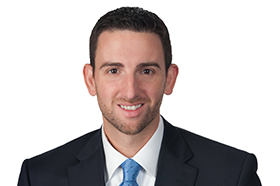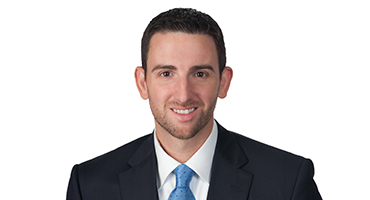The IRS on April 30 released guidance (Rev. Proc. 2024-23) providing an updated list of automatic method changes that will generally take effect immediately and modify, clarify and eliminate several important method changes previously found in Rev. Proc. 2023-24.
The new guidance incorporates the revised procedures from Rev. Proc. 2024-9 for taxpayers that make changes for specified research and experimentation (R&E) expenditures under Section 174, including the guidance provided in Notice 2023-63, as clarified and modified by Notice 2024-12 (see our prior story). In addition to incorporating the automatic changes, this revenue procedure removes several obsolete changes and revises many others. It also updates many expired terms and conditions.
The new procedures are generally effective immediately for any changes that are filed on or after April 30, 2024, if the year of change ends on or after Sept. 30, 2023. There are some transition rules discussed more below, and taxpayers should carefully assess the status of any current method changes to determine whether action is required.
Procedures revised from prior guidance
Certain terms and conditions in the following sections of Rev. Proc. 2024-23 have been modified, clarified or expanded, and the changes may affect the availability of the automatic procedures for certain taxpayer fact patterns. Below are the sections with significant revisions:
- Section 3.12: Treatment of natural gas transmission and distribution property
The procedures were expanded to allow taxpayers to treat the second taxable year ending after May 1, 2023, as if it were the first year ending after such date for purposes of applying certain per se capitalization rules in computing the Section 481(a) adjustment (section 5.08(3)(a) of Rev. Proc. 2023-15), which effectively allows some taxpayers one additional year of exemption from capitalizing losses under the safe harbor method and to clarify the impact of the Section 481(a) adjustment on a taxpayer’s regulatory books of account if the method applies to any property that is public utility property.
- Section 6.21: Depreciation of tangible property under Section 168(g) by CFCs
The revised procedures remove the sunset provision from this change. Therefore, controlled foreign corporations (CFCs) may continue to use the automatic procedure to change depreciation methods to the alternative depreciation system, regardless of whether the change is from a permissible or impermissible method.
- Section 7.01 (formerly 7.02 of Rev. Proc. 2023-24): Specified R&E expenditures for tax periods beginning after Dec. 31, 2021
The procedures clarify that this section does not allow taxpayers to apply Section 8 (percentage of completion method; however, taxpayers may be able to use automatic changes in Section 19.02 of Rev. Proc. 2024-23) or Section 9 (cost sharing transaction payments) of Notice 2023-63, as modified by Notice 2024-12. It also makes clear that taxpayers are able to use the automatic method change in the second year beginning after Dec. 31, 2021. Lastly, the revised procedures modify the declaration control number (DCN) so that all changes for Section 174 are included in DCN 265.
The revisions to the change under Section 7.01 provide clarity for taxpayers that may have already made a change in the first year after Dec. 31, 2021, and would like to make a subsequent year change, including to use one or more provisions from the notice. It also makes it easier for taxpayers to pick the correct DCN when filing Form 3115.
- Sections 12.01 & 12.02: Certain UNICAP methods by resellers, reseller producers and producers
The procedures have been revised to exclude changes to or from the direct reallocation method or the step allocation method. They also do not allow taxpayers using those methods to make or revoke the 90-10 de minimis rule to allocate mixed service costs.
These changes restrict a taxpayer’s ability to file automatic method changes, requiring the changes to be submitted under the nonautomatic procedures in Rev. Proc. 2015-13. Taxpayers making any of these changes should review the transition rules below to see if there is any relief available based on the status of their method change as of April 30, 2024.
- Section 16.08: Changes in the timing of income recognition under Section 451(b) and (c)
The guidance modifies this section to exclude changes to comply with the all-events test under Treas. Reg. Sec. 1.451-1(a). The procedures provide a modified ordering rule for taxpayers that are making both a cost offset-related inventory method change and a change to apply a cost offset method in the same year of change that will require taxpayers to implement the cost offset-related inventory method before the change to apply the cost offset method. Additionally, if a taxpayer that already uses a cost offset method is required to file a cost offset change as a result of making a cost offset-related inventory method change, the revised procedures allow both method changes to be filed on a single Form 3115.
These changes restrict a taxpayer’s ability to file automatic method changes, requiring the changes to be submitted under the nonautomatic procedures in Rev. Proc. 2015-13. Taxpayers making any of these changes should review the transition rules below to see if there is any relief available based on the status of their method change as of April 30, 2024.
The modifications to the ordering rules for concurrent cost offset-related inventory method changes and changes to apply a cost offset method greatly simplify the filing process and will be welcome news for taxpayers. Additionally, the ability to file a single Form 3115 for a concurrent cost offset-related method change and a change within a cost offset method because of the first change will reduce the reporting burden for taxpayers.
Obsolete method changes
The following sections from Rev. Proc. 2023-24 are obsolete and no longer applicable to any timely tax returns filed on or after April 30, 2024, and have been removed:
- Section 12.18: Late revocation of elections under Section 263A(d)(3)
- Section 20.13: Treating inventory costs as incurred under Treas. Reg. Sec. 1.461-1(a)(2) and Treas. Reg. Sec. 1.461-4(d)(4)
Additionally, the guidance removed temporary and expired provisions from other sections that are no longer applicable to any timely filed tax returns filed on or after April 30, 2024.
Effective date and transition rules
As noted above, the procedures are effective immediately for any changes that are filed on or after April 30, 2024, if the year of change ends on or after Sept. 30, 2023. Effectively, most taxpayers that have not yet timely-filed a tax return and have also not yet filed a duplicate copy of the method change with the IRS in Ogden, Utah (or with the IRS National Office, as appropriate) must follow the new procedures. The IRS provided transition rules for certain scenarios:
- If the taxpayer properly filed the Ogden copy of a Form 3115 before April 30, 2024, for a change that continues to qualify under the automatic procedures, the taxpayer has the option to continue to implement the change as described in Rev. Proc. 2023-24, as modified prior to April 30, 2024, or alternatively to refile the duplicate copy under the new procedures.
- For a taxpayer that is filing a method change that can no longer be filed under the new automatic procedures for any reason:
- If the change was filed — either original or Ogden copy — prior to April 30, 2024, then the taxpayer may continue to make that change under the automatic procedures, and the taxpayer is not required to file a duplicate copy with Ogden.
- If the change was NOT filed — either original or Ogden copy — prior to April 30, 2024, then the taxpayer must instead file the change under the non-automatic procedures until the extended due date of the return for a taxable year ending before April 30, 2024.
- While there are no new automatic method changes in Rev. Proc. 2024-23, if the taxpayer had previously filed a non-automatic method change with a fact pattern that would now qualify under these automatic procedures because of the clarifying changes, the revenue procedure provides a limited-time transition rule to convert the filing to an automatic change.
It will be critical to determine if a copy of the requested change has been filed with the IRS, because that will determine which procedures a taxpayer is eligible to use. Taxpayers that have already filed a copy have flexibility to refile under the new procedures. However, if a copy has not been filed, then taxpayers must update their Form 3115 and other supporting documents to conform to the new procedures.
Next steps
Rev. Proc. 2024-23 consolidates and modifies procedures from the previous list of automatic changes. Because the guidance is effective immediately for tax years ending on or after Sept. 30, 2023, taxpayers should carefully examine the status of any current method changes and the transition rules to determine the correct actions, if any, necessary to effectuate the changes.
For more information, contact:



Washington, D.C.



Washington, D.C.
Content disclaimer
This Grant Thornton Advisors LLC content provides information and comments on current issues and developments. It is not a comprehensive analysis of the subject matter covered. It is not, and should not be construed as, accounting, legal, tax, or professional advice provided by Grant Thornton Advisors LLC. All relevant facts and circumstances, including the pertinent authoritative literature, need to be considered to arrive at conclusions that comply with matters addressed in this content.
Grant Thornton Advisors LLC and its subsidiary entities are not licensed CPA firms.
For additional information on topics covered in this content, contact a Grant Thornton Advisors LLC professional.
Tax professional standards statement
This content supports Grant Thornton Advisors LLC’s marketing of professional services and is not written tax advice directed at the particular facts and circumstances of any person. It is not, and should not be construed as, accounting, legal, tax, or professional advice provided by Grant Thornton Advisors LLC. If you are interested in the topics presented herein, we encourage you to contact a Grant Thornton Advisors LLC tax professional. Nothing herein shall be construed as imposing a limitation on any person from disclosing the tax treatment or tax structure of any matter addressed herein.
The information contained herein is general in nature and is based on authorities that are subject to change. It is not, and should not be construed as, accounting, legal, tax, or professional advice provided by Grant Thornton Advisors LLC. This material may not be applicable to, or suitable for, the reader’s specific circumstances or needs and may require consideration of tax and nontax factors not described herein. Contact a Grant Thornton Advisors LLC tax professional prior to taking any action based upon this information.
Changes in tax laws or other factors could affect, on a prospective or retroactive basis, the information contained herein; Grant Thornton Advisors LLC assumes no obligation to inform the reader of any such changes. All references to “Section,” “Sec.,” or “§” refer to the Internal Revenue Code of 1986, as amended.
Grant Thornton Advisors LLC and its subsidiary entities are not licensed CPA firms.
Trending topics









Share with your network
Share